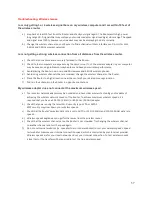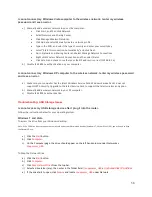
25
FIREWALL SETTINGS
The Router’s Firewall is designed to prevent unauthorized users from accessing your network. This section will
go over the different features of the Firewall and how to configure them.
Port Filtering
Port Filtering is a security measure that prevents users from
using specific ports for reasons other than what those ports
were originally intended for. For example, TCP port 21 is
traditionally used for FTP. However, there is nothing
stopping a user from using port 21 for purposes other than
FTP access. By enabling Port Filtering on TCP port 21, only
FTP communications would be allowed. No other types of
communication would be allowed on this port.
Hackers may sometimes scan for all open ports on your network as a method of hacking into your network.
Port Filtering and other firewall features help to prevent this from happening.
To set up Port Filtering, select a range of ports you wish to filter. If you are trying to filter a single port, enter
the port number twice. (For example, Port 21: 21 – 21) Select the Protocol of the port you are filtering. If you
do not know what protocol you wish to filter, select “Both”.
Port Forwarding
Port Forwarding is a rule that tells the Router that if a specific
type of request comes in on a specific port,
then that request
should be forwarded to a specific device on the private
network.
Port Forwarding is often used for setting up servers, cameras
and other devices that require remote access.
Enable Port Forwarding: Enables designated ports to begin
forwarding.
IP Address:
The IP address of the device behind the Firewall that is being designated for Port Forwarding.
Protocol:
Select UDP, TCP or Both for the protocols to be forwarded.
Port Range:
Select a range of ports for the designated IP address that you wish to be forwarded.
Comment:
Create a name that you can use to easily identify this Port Forwarding entry.
















































